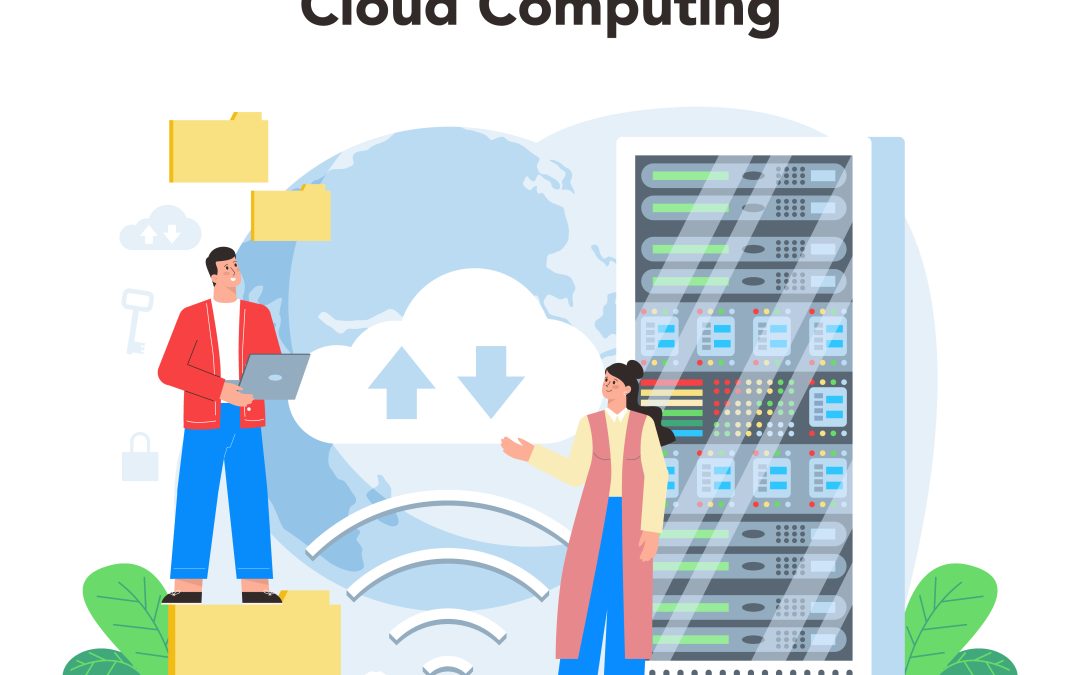Introduction
The rapid advancement of computing has transformed the landscape of cloud architecture, enabling businesses to scale, innovate, and optimize their digital ecosystems. Cloud architects are responsible for designing and implementing cloud solutions and leveraging various computing technologies to build resilient, secure, and efficient cloud infrastructures. This article explores the crucial role of computing in empowering cloud architects, detailing how advancements in cloud computing, edge computing, distributed computing, and high-performance computing enhance their capabilities.
Understanding Computing in Cloud Architecture
Defining Computing
At its core, computing refers to using computers to process data, execute algorithms, and solve problems. In the context of cloud architecture, computing is a broad term encompassing cloud computing, distributed computing, high-performance computing, and quantum computing. Each computing paradigm is critical in shaping cloud environments, ensuring efficiency, security, and scalability.
Computing as the Foundation of Cloud Architecture
Cloud architecture relies on various computing models, including Infrastructure-as-a-Service (IaaS), Platform-as-a-Service (PaaS), and Software-as-a-Service (SaaS). These models are powered by computing resources such as virtual machines, containers, and serverless architectures. Cloud architects must understand how different computing resources work together to optimize cost, performance, and reliability.
The Role of Cloud Computing in Cloud Architecture
On-Demand Scalability
Cloud computing provides on-demand access to computing resources, allowing cloud architects to design dynamically scaled systems. Whether handling traffic spikes or distributing workloads across multiple servers, cloud computing ensures high availability and performance.
Virtualization and Containerization
Virtual machines (VMs) and containerized environments such as Kubernetes help cloud architects create modular, scalable, and portable applications. These technologies reduce hardware dependency and facilitate seamless deployment across different cloud environments.
Serverless Computing
Serverless computing eliminates the need for traditional server management, enabling cloud architects to focus on application logic rather than infrastructure. Architects can build event-driven applications that automatically scale based on demand by leveraging serverless platforms like AWS Lambda, Google Cloud Functions, and Azure Functions.
The Influence of Edge Computing
Reducing Latency
Edge computing extends cloud capabilities by processing data closer to the source, reducing latency, and improving response times. Cloud architects integrate edge computing into their designs to optimize performance for real-time applications such as IoT devices, autonomous vehicles, and smart cities.
Enhancing Security and Compliance
By processing sensitive data locally before transmitting it to the cloud, edge computing enhances security and regulatory compliance. This is especially crucial in industries like healthcare and finance, where data privacy is a top priority.
High-Performance Computing (HPC) and Cloud Architecture
Accelerating Computational Workloads
High-performance computing (HPC) leverages powerful computing clusters to handle complex computations, such as simulations, data analysis, and artificial intelligence (AI) workloads. Cloud architects integrate HPC solutions to enable faster processing of large datasets.
AI and Machine Learning in Cloud Computing
AI-driven cloud solutions rely on HPC infrastructure to train deep learning models, process big data, and provide intelligent analytics. Cloud architects leverage AI to automate cloud resource management, optimize costs, and improve performance.
Challenges and Future Trends
Security Concerns
While computing technologies empower cloud architects, they also introduce security challenges. Ensuring data protection, preventing cyber threats, and managing access control remain critical aspects of cloud architecture.
Quantum Computing: The Next Frontier
Quantum computing holds the potential to revolutionize cloud architecture by solving complex problems at unprecedented speeds. While still in its early stages, cloud architects must prepare for the integration of quantum computing into cloud environments.
Conclusion
Computing is essential for cloud architects, allowing them to design scalable, efficient, and secure cloud infrastructures. Cloud architects can develop innovative solutions that drive digital transformation by leveraging cloud computing, edge computing, distributed computing, and high-performance computing. As emerging technologies like quantum computing advance, computing’s role in cloud architecture will continue to grow, shaping the future of cloud computing and beyond.


